For regular readers of the Gentleman’s Gazette, it will come as no surprise that we believe wearing a suit is a great way to make a good first impression, feel more confident about yourself, and generally put your best foot forward. With that said, though, a suit can be tricky to wear well. So, today, we’ll discuss 12 common mistakes and how you can avoid them.
- Ready-to-Wear Suit Mistakes
- 1. Leaving In The Stitching
- 2. Leaving On The Tags
- 3. Valuing Brand Name Over Style & Fit
- 4. Valuing Fabric Or Construction Over Style & Fit
- 5. Believing No Alterations Will Be Necessary
- Custom (MTM & MTO) Suit Mistakes
- 6. Too Much Choice!
- 7. Not Following Online Measurement Guides
- 8. Expecting a Perfect Fit
- Bespoke Suit Mistakes
- 9. Not Listening To Your Tailor
- 10. Standing Unnaturally When Being Measured
- 11. Sticking With Just One Tailor For Everything
- 12. Thinking That You Are Above Others Because Your Suit Is “Better” Than Theirs
- Outfit Rundown
As we’ve said countless times in other posts and videos: whether you’ve purchased a suit off-the-rack or had it made specifically for you, the most important thing to get right is fit. If you’re unsure of what a good suit fit looks like, though, our guide How A Suit Should Fit has you covered.
With that most important aspect out of the way, let’s cover 12 other mistakes men make when wearing suits that will overall make them look sloppy, amateurish, or as though they don’t know the finer points of menswear. But, of course, we are here to help men look their best in any situation.

Ready-to-Wear Suit Mistakes
Most men will likely have the highest amount of experience with ready-to-wear suits, so we’ll start there. For a menswear aficionado, there are few better feelings than getting a brand new suit home for the first time, ready to wear it as soon as you can. But, before you do, there are a few things you need to take care of to make sure you’re walking out the door looking your best.
1. Leaving In The Stitching
Many suits are sold with so-called “tack stitching” at various points, mostly found on the jacket, though it can also be found on the waistcoat for a three-piece suit. This tack stitching is present for several reasons.
The first is to show that the suit is indeed new and hasn’t been purchased or worn by someone else. The second is to hold it in shape over time, as suits, like any garment, have a tendency to relax a bit over time as they’re hanging.

Once you have purchased the suit, however, you should remove this tack stitching. Usually, it’s going to be in a contrasting color from the body of the suit to stand out more. This isn’t meant to be a style design feature.
There are also certain suits that will incorporate thread of a different color for design elements, like decorative buttonholes, for instance, but you shouldn’t be removing this stitching.
So, once you’ve gotten your new ready-to-wear suit home, get out a small pair of scissors or a seam ripper and look for tack stitching in these key areas:
- The first would be the sleeves, where the cuff is held together.
- Next would be pockets including, but not limited to, the breast pocket, waist pockets, ticket pocket, and pockets on the waistcoat.

- Stitching on the back vents, which may be present for both single and double-vented jackets, over the lapel buttonhole to keep it shut before it’s worn, in which case you’ll see a deliberate pattern of cross stitching over the top of the buttonhole.
- Lastly, across the shoulder seams of the jacket.
Once you’ve taken the stitching out in these key areas, the suit will look like it’s truly yours, rather than like you stole it off a store mannequin and are now wearing it out and about.
2. Leaving On The Tags
While you’ve got your scissors or seam ripper handy, we can also cover our second closely related suit mistake today, which is leaving on the tags. We’re not talking here about the swinging tags with the branding, size, price, and barcode. Hopefully, you’ve already taken these off! Instead, we’re talking about the sewn-on tags that are commonly found on the jacket’s sleeve.
These tags are made of fabric and either printed or embroidered with things like the company’s logo, what type of cloth the suit is made from, or which mill provided the cloth for the suit. It’s worth noting that not every ready-to-wear suit has these sorts of tags on it, but many do.

It seems as though many men are unsure just what to do with them as you can often see men leaving these tags on their suit jacket sleeves. Well, you’ve heard it here definitively: take off those tags! They’re essentially just there for branding and information purposes. Removing these tags will result in a more refined and sophisticated look.
3. Valuing Brand Name Over Style & Fit
It’s no secret that brands put plenty of time and money into advertising; after all, it’s all about those dollar bills. So, it’s only natural that it can be a little confusing when looking for a new suit as to where to spend your money.
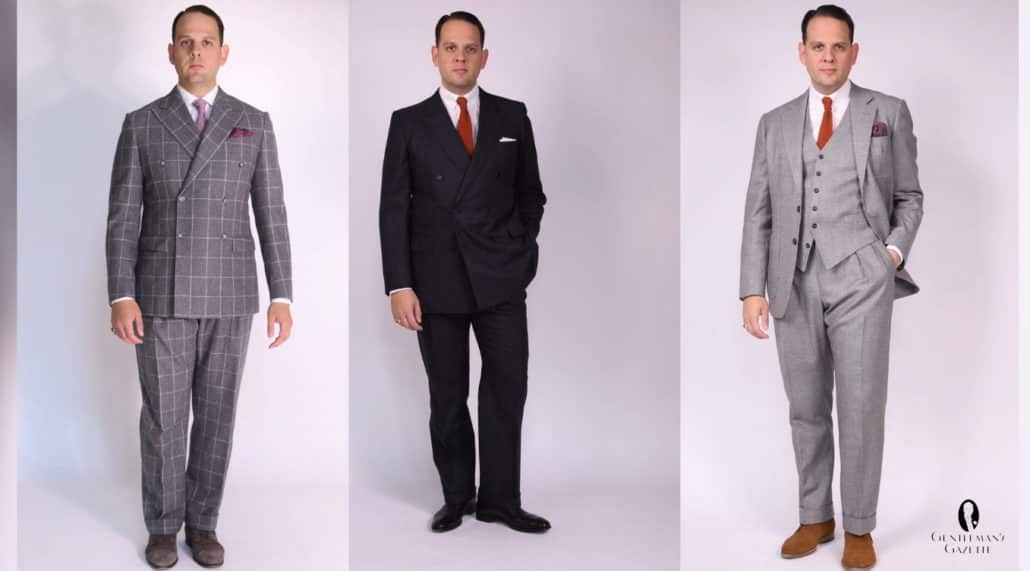
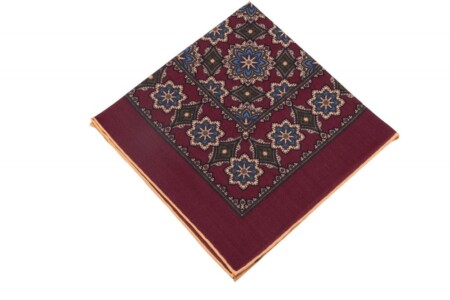
Fort Belvedere
Burgundy Red Silk Wool Pocket Square with Printed geometric medallions in olive green, light blue, cream and orange with beige contrast edge by Fort Belvedere
Of course, some brands will carry a certain weight to their name because of a reputation for quality when it comes to suits or anything else. Speaking of quality, well-known brands, you can take a look at our Is It Worth It? review series to find out what we learned from testing popular items from prestigious names in the menswear world.
But, when it comes to purchasing a suit, the way that it looks on you, regarding both the fit and the overall appearance on your frame, is going to be paramount.
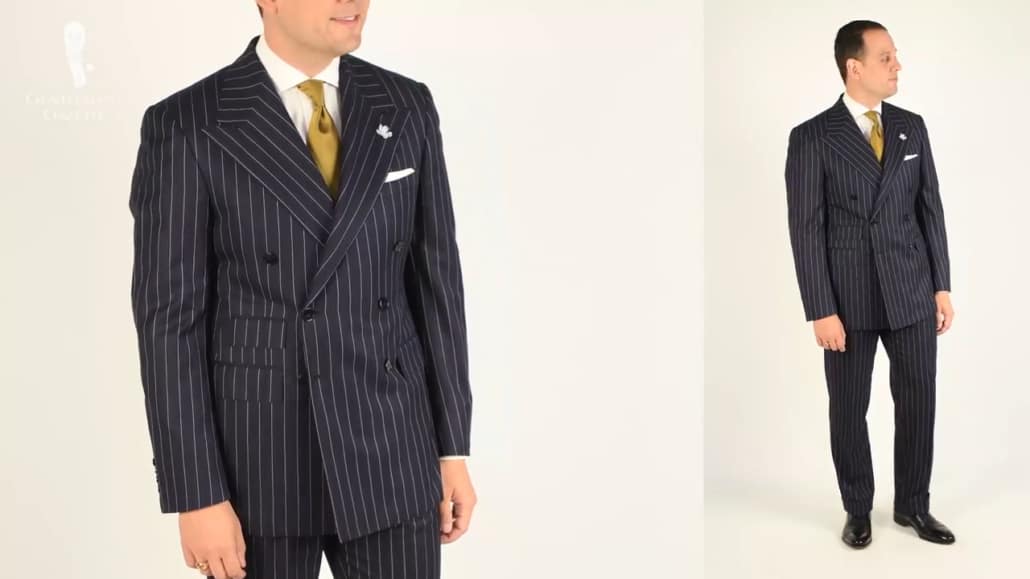
To put this into context, a suit from Ralph Lauren may be prestigious because of the name, but if it fits you poorly or doesn’t work with your overall aesthetic, it’s going to look worse than a lesser or non-name brand suit that fits you well and works with your style.
4. Valuing Fabric Or Construction Over Style & Fit
You’re probably sensing our overall theme today, which is to say: don’t let obsession over tiny details get in the way of larger questions of good taste. Of course, the material your suit is made from is an important aspect to consider.

For example, a suit made from synthetic materials may be hotter and breathe less well, whereas a suit made from natural fibers will be more breathable and more comfortable, generally speaking. What we mean to say here is, don’t let the suit’s fabric be the deciding factor on whether you buy it or not.
And, by the same token, there are many suits available on the market which boast construction details that have historically been associated with bespoke level craftsmanship; things like working cuff buttons, hand-stitched Milanese buttonholes, and curved Barchetta pockets.
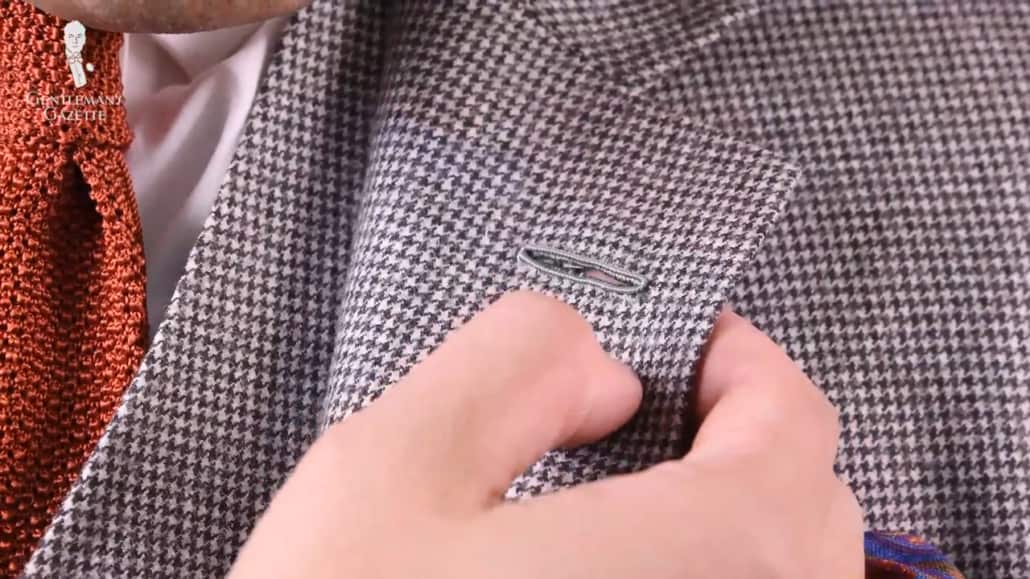
However, these are all examples of construction details that can now more readily and frequently be found on ready-to-wear suits. Details such as these do require more time and effort to achieve, but at the end of the day, they are just details.
Because these elements were historically associated with garments that cost more money and took more time, it can be tempting to think that if you show off these kinds of details, people may think your suit is more expensive. But, again, focus on the fact that overall fit is most important.
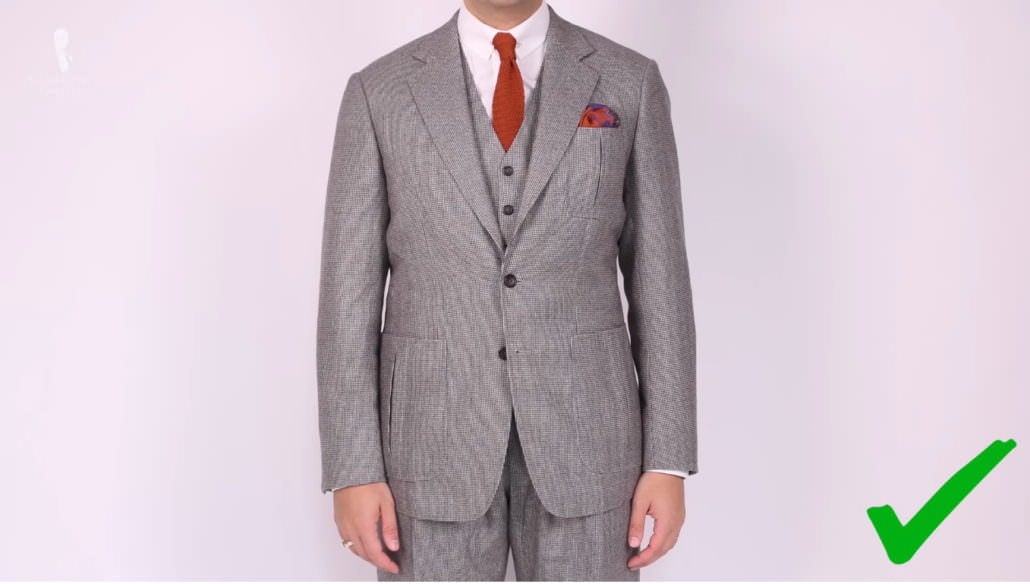
5. Believing No Alterations Will Be Necessary
The benefit of ready-to-wear suits is right in the name; they are supposed to be ready-to-wear right off the rack. But, in fact, this is only true to a general degree, and it’s a misconception to think that there are no alterations that will be necessary once you buy one of these suits.
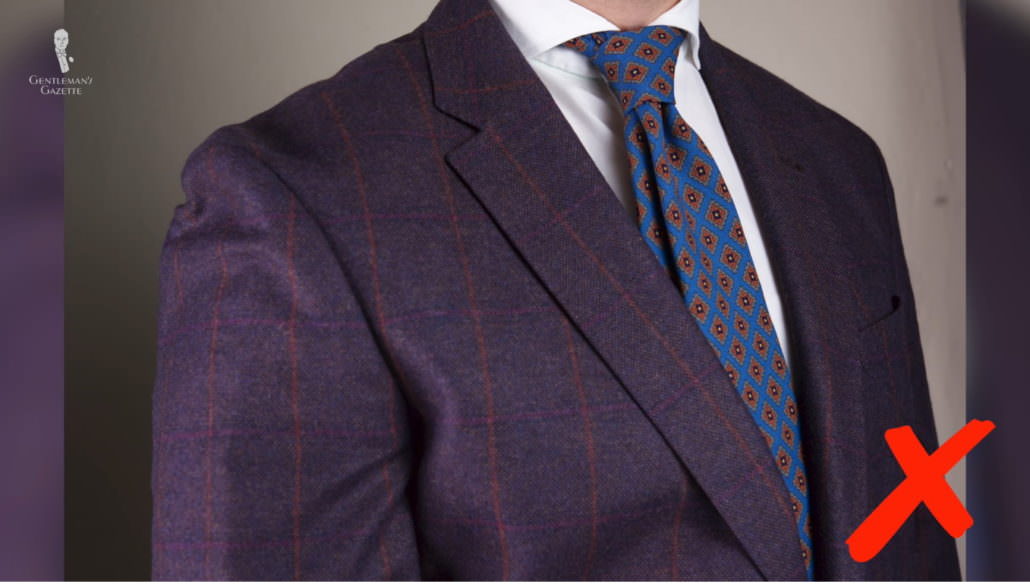
Humans, of course, are naturally asymmetrical, with things like one arm or one leg longer or shorter than the other and shoulders that don’t sit perfectly level. Overall, we can be tricky to fit things to.
Meanwhile, ready-to-wear suits are designed on symmetrical blocks designed to fit the widest amount of people possible. After all, it’s easier for a retailer to make one basic suit shape and simply scale it up or down based on a few measurements like chest size or waist size.
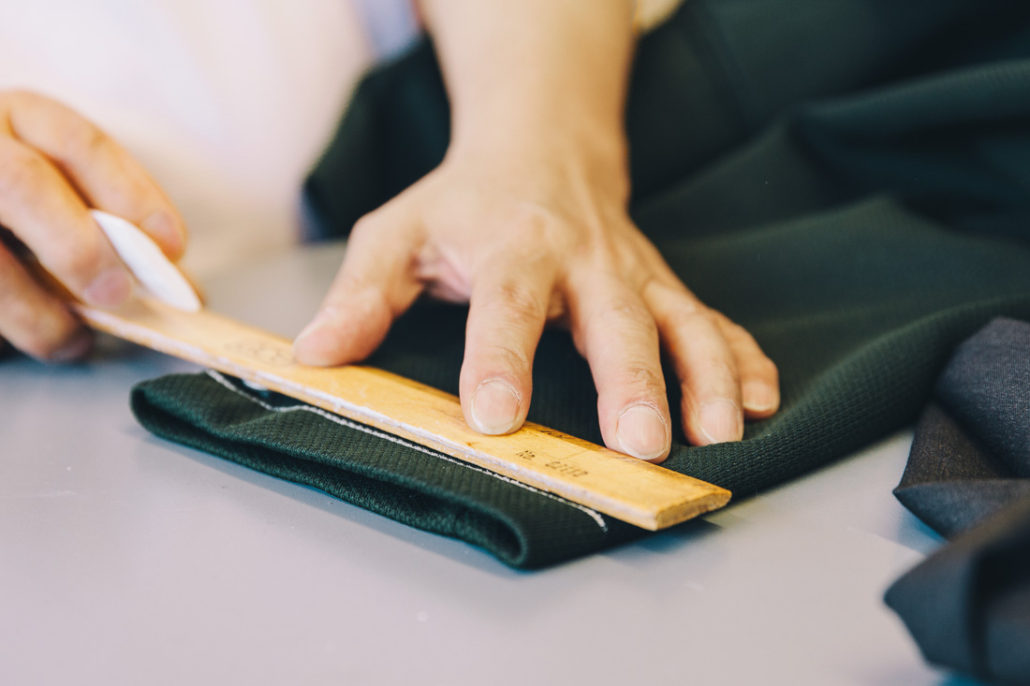
So, while you may be lucky to find a ready-to-wear suit that does generally fit you well right off the rack, you should still consider getting some alterations done in a few key areas if nothing else, like the length of the sleeves, length of the trousers, and a bit of waist suppression on the jacket.
We’ve covered what alterations tailors can and can’t do successfully in another post, but overall, keep in mind that it’s generally a good idea to take your new ready-to-wear suit into the alterations tailor just to check up on these few key areas if nothing else.
Custom (MTM & MTO) Suit Mistakes
The word “custom” can mean many things when it comes to clothing and suits in particular. For the purposes of today’s post, though, we’ll take the word “custom” to mean anything that isn’t immediately available to purchase and wear, but at the same time, isn’t being made by a bespoke tailor.
To be more specific then, this section will cover made-to-order suits, such as those that can be made with SuitSupply’s online create-your-own tool, and also made-to-measure suits, where your measurements are input into a database, and an existing pattern is altered based on those measurements.
Firstly, keep in mind that custom suits can still have the same problem areas as ready-to-wear suits because, after all, they are still based on ready-to-wear patterns.
The difference, then, is that you’re going to choose a few key aspects, like the fabric lining or buttons, and some stylistic details, like the pockets or lapels. Even when you receive your finished suit, you’ll still want to look into getting those key alterations.
6. Too Much Choice!
When it comes to having an element of control over the look of a suit, the temptation to go wild can be strong like the proverbial kid in a candy store. But, just because you can choose a bold color or pattern, a fancy fabric or other stylistic details doesn’t necessarily mean that you should.
Indeed, one of the joys of having a say in the creation of a suit is your ability to make sure that you’re doing the simple things well. Although it may be tempting to go for a wild design, we would suggest that you stick with a classic suit design that will stay stylish for years to come, at least at first.
On that note, we’ve previously talked about how many suits a man should own in a separate post, which you might find interesting.
7. Not Following Online Measurement Guides
In the same way that no two ready-to-wear suit brands will be identical, the same is true for made-to-measure suit brands. You may think that all you need to do is simply measure yourself in a few key areas once, and then you’ll be able to order from any brand easily. But, in fact, different brands don’t measure things in the same way.
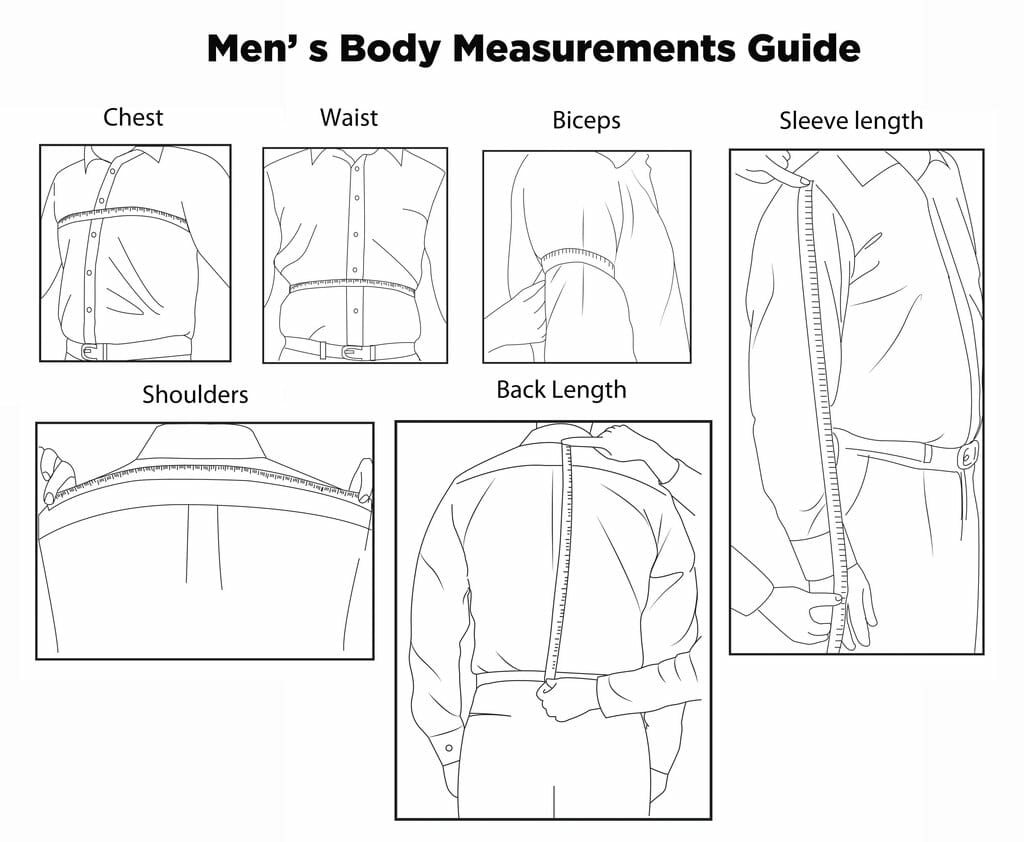
Some brands are only going to require a few measurements, while others will require many more, and there’s also the question of the method in which the measurement is taken. As an example here, let’s look at a key one, that being sleeve length.

This can be measured in a straight line from shoulder to wrist, from shoulder to elbow, then to wrist with your elbow bent or from the middle of your neck, across your shoulder, and down your arm to your wrist, among others. Of course, you’re likely going to get different measurements with each different method. So, a measurement that’s good for one brand may not work for another.
So, if you’re ordering a made-to-measure suit, you should follow the specific measuring guide provided by that brand. If you have questions or concerns, it’s a good idea to reach out to the company to check that your methodology is correct and that you have an accurate measurement because, after all, the result, otherwise, will be a poorly fitting suit.
As a bonus tip here, we’d suggest having someone else take your measurements for you as trying to measure yourself will pull your body out of its natural resting position and may throw off-key measurements. On that note, then, for some general measurement tips, you can take a look at our Buying Suits Online guide.
8. Expecting a Perfect Fit
Our eighth mistake today is expecting a perfect fit, which is to say that many men will choose to upgrade from a ready-to-wear suit to a made-to-measure suit, expecting that it will have the same quality of fit as a bespoke garment, but without all of the additional hassle that goes into that process.
The truth, though, is that buying a made-to-measure suit is a bit like using a calculator. If you don’t provide the correct inputs of information, you’re not going to get the answer that suits you.
One of the risks with buying a made-to-measure suit is that even if your measurements are input accurately, there’s no guarantee that the suit will fit you properly or, at least, as expected. This is because many made-to-measure companies don’t carry out a fitting, so the suit you receive is the finished item, and it may not fit you in the way you desired.
On a positive note, though, many more made-to-measure retailers are improving their customer service and fit guarantee these days, and some, where they’re able, are offering in-store fitting and alterations. With this said, even after an in-store alteration, you may not still have an exact fit as I experienced in our SuitSupply testing and review.
Bespoke Suit Mistakes
Let’s move up the sartorial ladder again, and discuss mistakes related to bespoke suits.
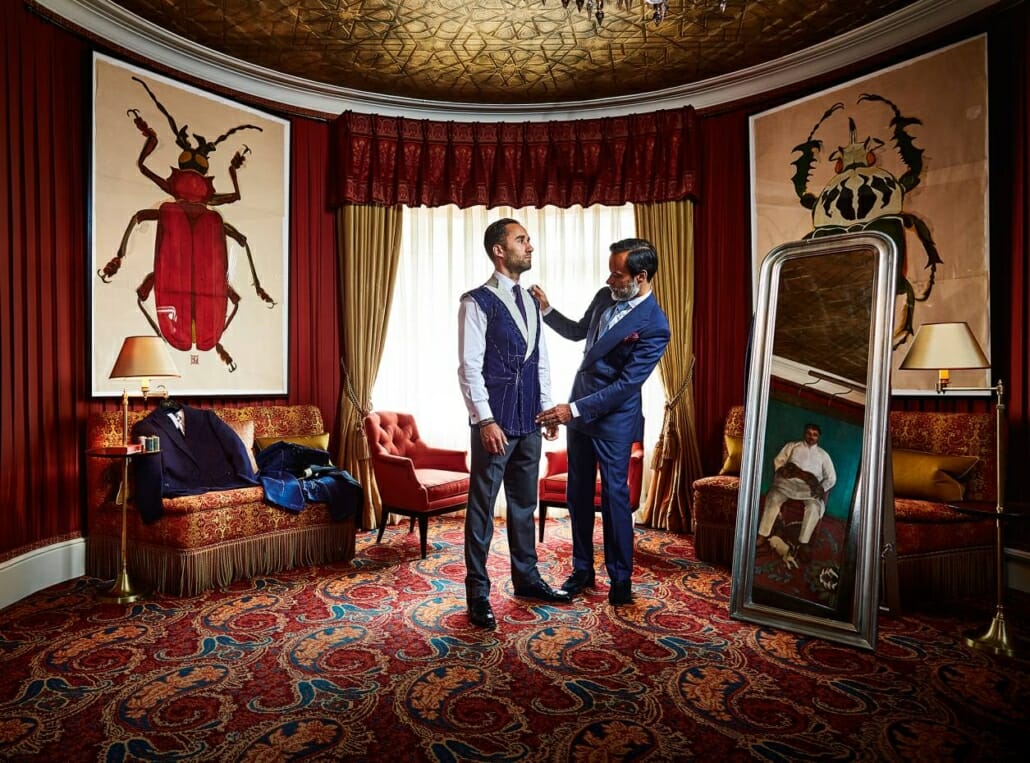
9. Not Listening To Your Tailor
A good tailor will be well-trained in the art of making clothes, and often, this training will have lasted for several years at a time. And although each tailor has their own particular style that they’re going to cut and make, their overall goal is always to make you look your best.
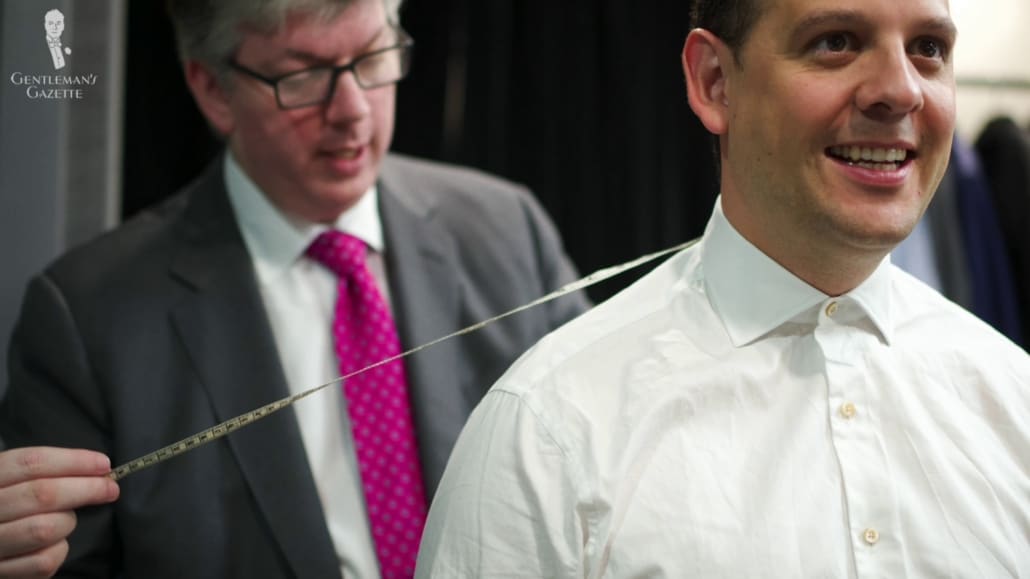
Of course, there are limits to what your tailor can and can’t achieve, and, indeed, asking them to construct something for you that isn’t in their house style may result in them refusing your commission as, after all, they do have a reputation to uphold as well.
Ultimately, though, their training is to assess your body structure and create the perfect suit for your needs. So, even if you go to your tailor with a specific look in mind, following a discussion, your tailor will probably have a few suggestions to make for how the design could be altered.
A tailor’s suggestions are given to benefit you because, after all, they will have a good deal of knowledge about what’s going to suit you best. We’re not saying that you should always blindly follow your tailor, especially if you have menswear knowledge of your own. But, remember that their suggestions are made for your benefit and are backed by years of experience.
10. Standing Unnaturally When Being Measured
There’s a common misconception out there that when you’re being measured for a bespoke suit, you should stand as tall and straight as possible, just like a soldier.
In truth, though, this is probably one of the worst things you can do while being measured. Why is this? Simply put, the measurements taken will be most accurate to whatever pose you’re in when they are taken. So, unless you plan to be standing straight and stiff as a soldier all the time, the suit probably isn’t going to have proper measurements and may be uncomfortable as a result.
Instead, when you’re being measured for a bespoke suit, remember to stand naturally. As we mentioned, your tailor should have a wealth of experience in fitting garments to different body types, so standing naturally and taking time to relax is going to be your best bet.
And if you do have any genuine and specific fit concerns, be sure to share them with your tailor. In the same way that you would do so with your doctor or optician, if your tailor doesn’t know about particular fit issues, they aren’t going to be able to help you with them.
11. Sticking With Just One Tailor For Everything
One of the numerous benefits of going bespoke is that you can form a good working relationship with your tailor over time, similar to how you might do so with your barber. You’ll develop a personal uniform of sorts over time, and you can depend on your regular tailor to do this well.
But, you shouldn’t limit your field of view overall, and you can keep in mind that different types of tailors will be best suited to different schools of tailoring.

As a rule of thumb, an Italian tailor will create suits that are softer and more casual, perfect for seasonal or informal wear. In contrast, an English tailor will typically create a suit that is far more structured, good for more formal and business-like environments.
So, it’s a great thing if you’ve got a good working relationship with one tailor, but remember that you don’t have to be wedded to them for everything–and if you’re looking for a suit in a different style, you may want to consider a different tailor.
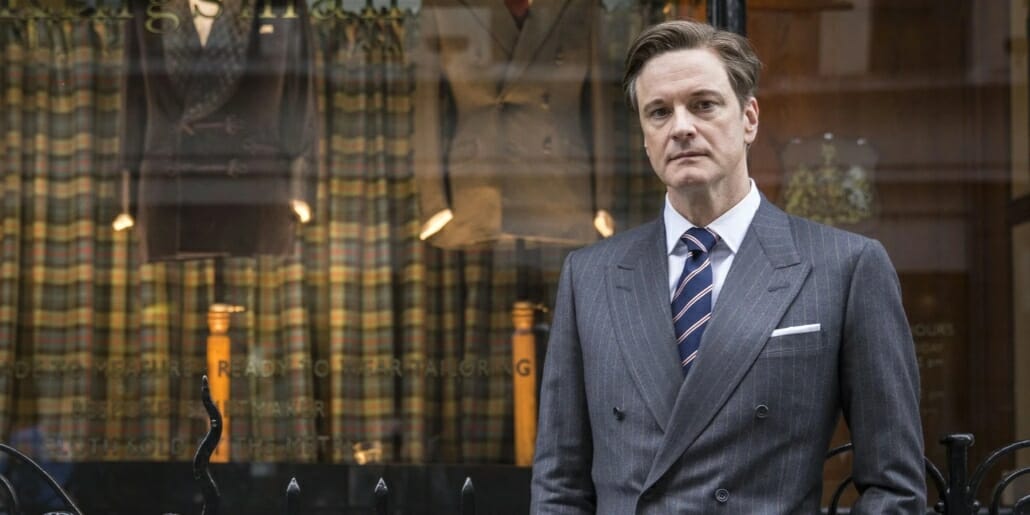
12. Thinking That You Are Above Others Because Your Suit Is “Better” Than Theirs
Remember that style is subjective, and what one person likes, another may not. Of course, that’s not a bad thing. After all, can you imagine a world where we all wore exactly the same thing all the time? No, thanks!
Indeed, variety is the spice of life and, as you should now be aware, there are myriad options out there when it comes to what type of suit you can buy. This is why we love sharing our knowledge to help educate others about potential pitfalls and mistakes that they can avoid.

Everyone has to start somewhere, after all–including us. So, even if your suit costs you an arm and a leg, is made with the most exclusive fabric available, or has many intricate styling details, that doesn’t mean that you’re above other people who don’t have the same type of suit.
Outfit Rundown
To illustrate some of the principles and mistakes that we went over, I am indeed wearing a suit, but not one that is particularly special to any degree. It’s a simple two-piece suit in a royal blue color, which works well within my own personal aesthetic and matches well to other elements of my wardrobe. And I’m not concerned with the fact that it isn’t made from a luxurious fabric and that it doesn’t have any particularly fancy styling details. I purchased it off-the-rack and it does fit me relatively well overall.
I had the trousers hemmed to a specific length, but there are probably still further alterations I could make to it like waist suppression or differences in sleeve length that we mentioned before. For an overall blue and yellow color feel, I’ve paired it with a shirt from Charles Tyrwhitt featuring a Prince of Wales check in blue and yellow on a white ground, as well as several accessories from Fort Belvedere.
These would include our gold-plated sterling silver eagle claw cufflinks featuring tiger’s eye as the stone, an ancient madder bow tie in yellow, red, blue, and orange in a diamond pattern, my two-tone shadow-striped socks in navy blue and yellow, my pocket square in a color we’re calling antique gold ochre with printed geometric medallions in beige red and blue with a cream contrast edge, and my yellow dandelion boutonniere, which is a relatively new design to our shop.
My shoes are chocolate brown suede Oxfords from Undandy to go with the overall feel of the outfit, which is formal but not excessively so. And to work with both the yellow color feel and the informality of the formal outfit, I’ve also inserted contrasting Fort Belvedere laces into the shoes as well. And, of course, you can find all of the Fort Belvedere accessories I’m wearing in today’s video in the Fort Belvedere shop.


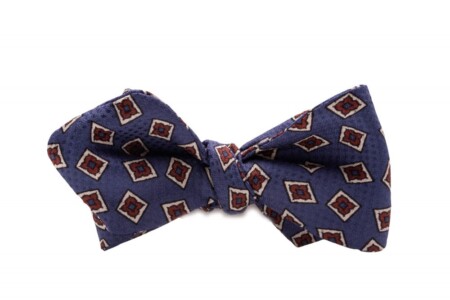
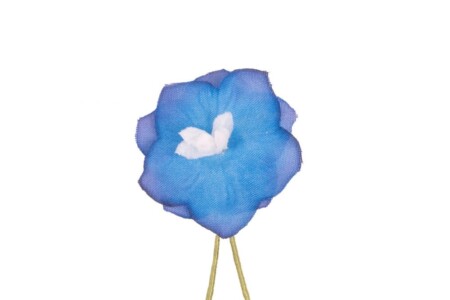
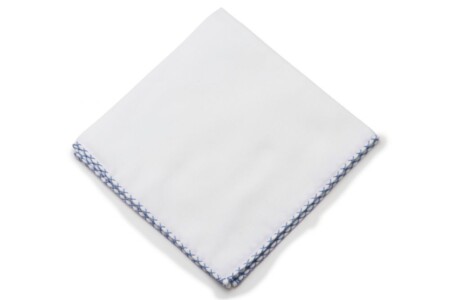
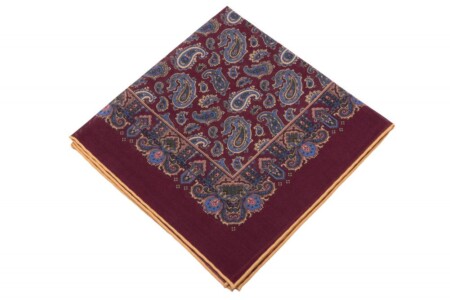
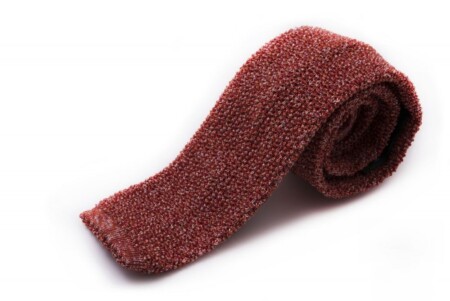
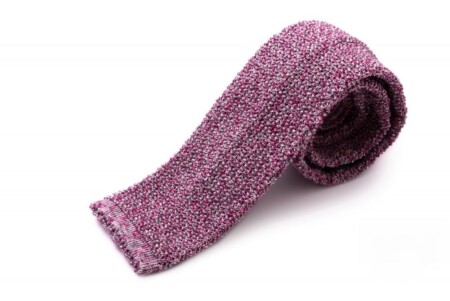
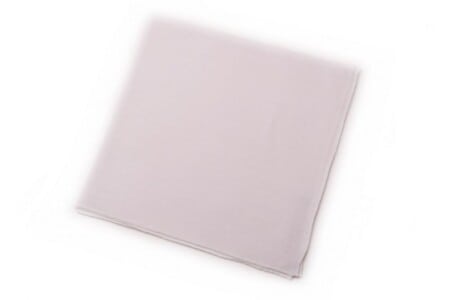
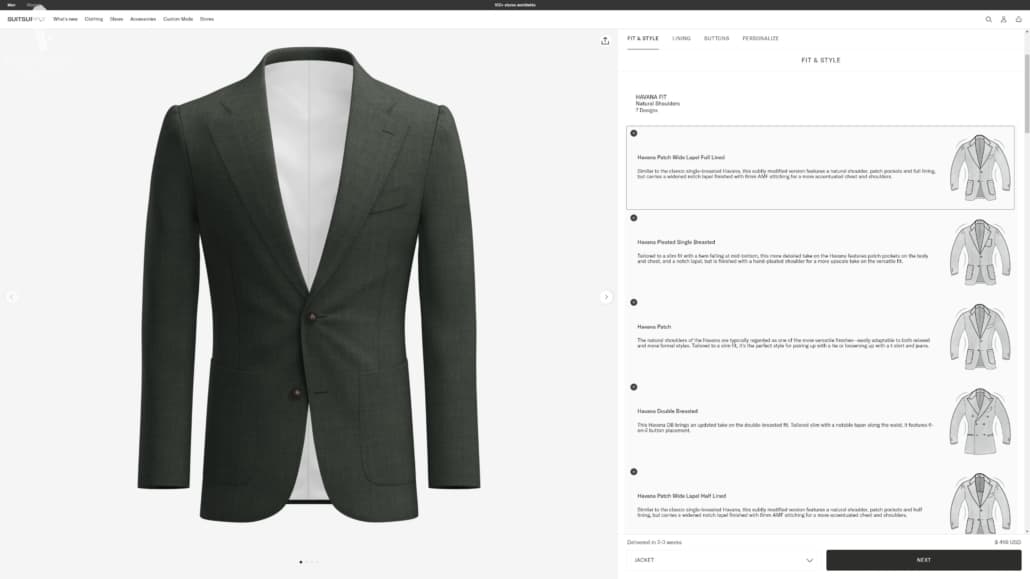

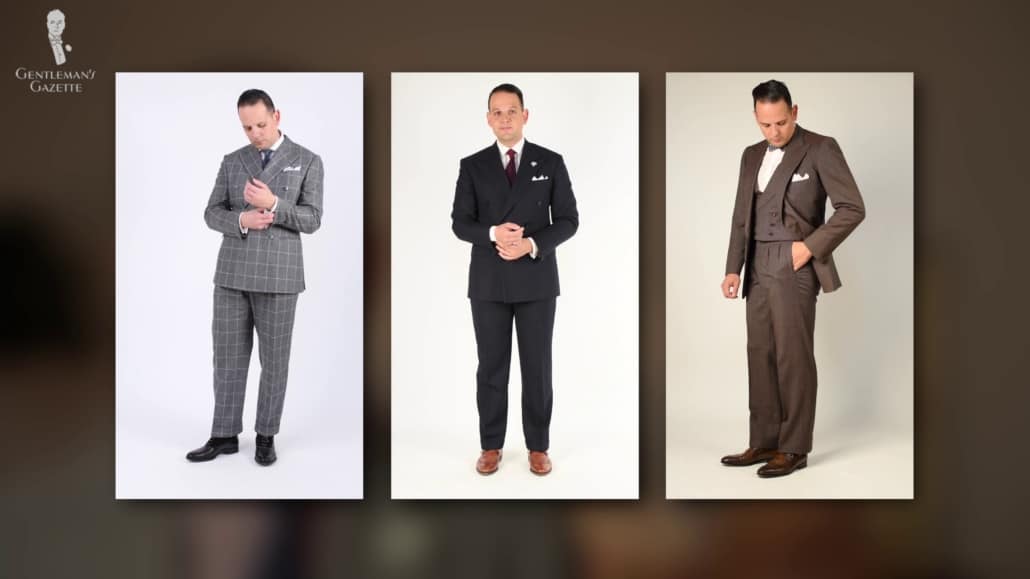




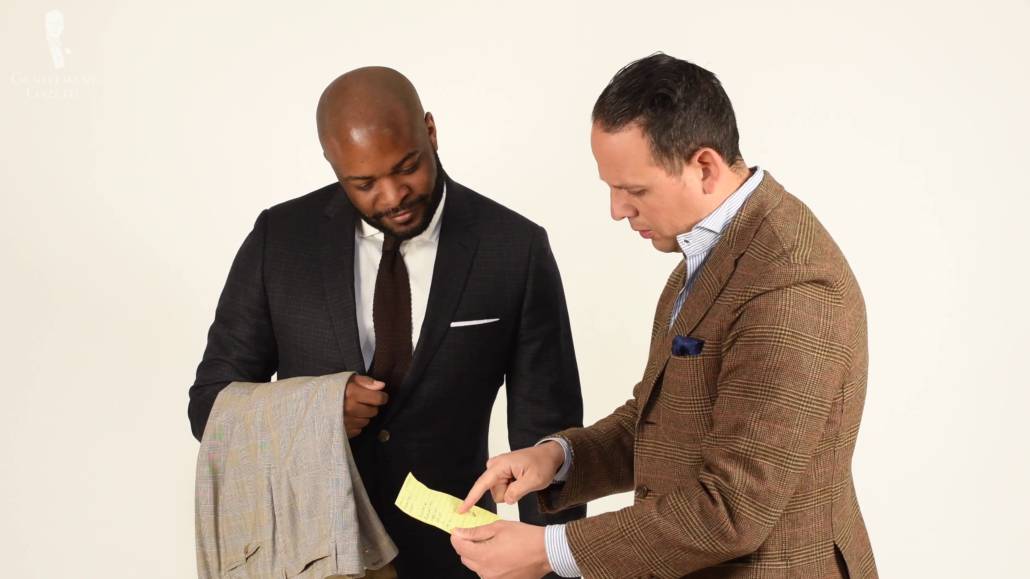
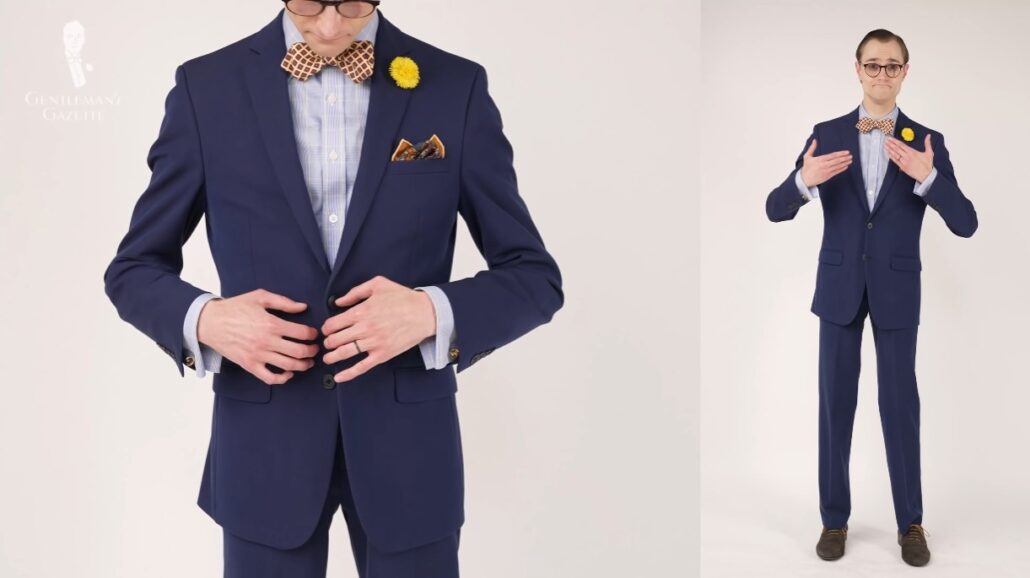
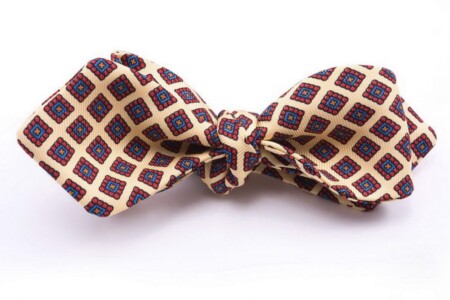

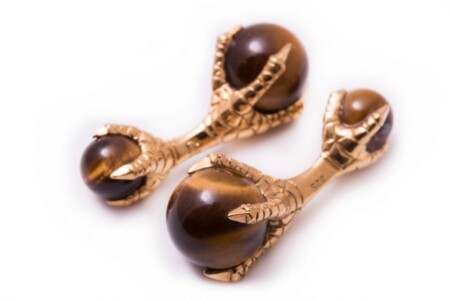
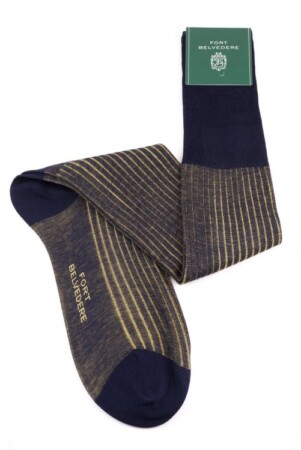
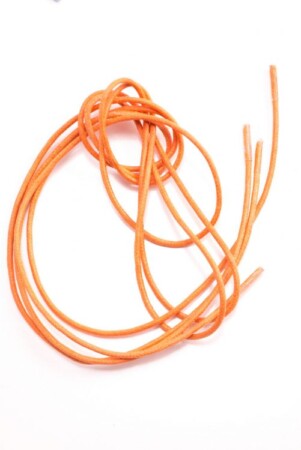
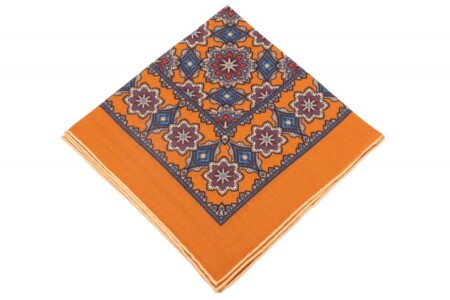
Three major mistakes for suits:
1) Sleeves too long;
2) The gap at the back of the collar;
3) The tightness of the back of jacket at the latissimus.
Make it 6 with #4, #5 and #6:
4) Pants too short – stupid new cropped pant trend emerging where the men look like they’re wearing capris or are wearing the suit their parents bought them when they were 10.
5) Wearing it with loafers (any shoes, really) and no socks. As they say: no, just no
6) Bad proportions. Eg. Wide lapels and skinny tie or narrow lapels with a tie wide enough to pass as a scarf
per your #4:
Oh come on, now. Don’t you know a pair of “modern fit plus-fours” when you see them?
No matter what suit I wore when I practiced law, I knew I was above others…my office was on the second floor of a two story building.
Preston can’t argue with you sir !
Lol, can’t argue with that logic
I enjoy reading your articles. I also enjoy wearing nice clothing and dressing up. I despise the “casual look” at Church,, especially when you know those men should wear a coat and tie.
A blue sport coat, pair of khakis, white or blue shirt and tie is a must need in a mans wardrobe and don’t forget a decent pair of shoes, polished.
Glad to hear you enjoy the articles! Nice choices for some wardrobe staples, too.
One man’s opinion here. One of the main things I dislike lately is the penchant for the extra slim style suits. The jackets don’t even cover the wearer’s rear. It looks like they grabbed their kid brother’s suit out of the closet instead of their own. Even very slim men look better in a classic styled suit.
Hi David, we certainly agree that a well-fitting, classically styled suit will look better than something which is riding a trend! Our article on modern style and why it only works for one body type might be of interest to you, too.
Wearing a coat and tie to church? I agree about looking good for church, however wearing a tie is not necessary!! I do not think ‘God” is going to come down and tell you anything as long as you show up and look ok, you’ll look fine!! Now, if you want to Impress the other people at church when they see ‘You” then by all means go for it.
I am at church to Pray to God, and not worry about the other people thinking how i look!! But, that just me !!
In the 21st Century, I don’t think a suit and tie is 100% necessary for church unless we’re talking about weddings or funerals, maybe Easter as the formality of the suit marks the solemnity of the occasion.
As for ‘looking okay’ well I find myself cringing on multiple counts. For one thing the term is so elastic and ambiguous; with today’s Slobocracy movement, that can mean sweatpants and t-shirts that aren’t stained or ripped/frayed. It seems that 90% of people seem to just throw on whatever and out the door they go. I went to an event recently with a ‘smart casual’ dress code and was aghast to see that for several other men, smart casual included gym shorts/board shorts, t-shirt, sport socks and running shoes. To me it showed a lack of respect for the host and the people around them. I’d definitely be rethinking your comment.
I have always found it interesting that certain churches/religions seem to either attract people who dress to a certain standard for services or require/recommend it, while others subscribe to the “come as you are” philosophy knowing full well that most assume it means something like shorts and flip-flops. Are you going to worship your chosen deity (or deities), or are you going for a pick-up game of basketball or to fix the toilet? A service on one side of the street is all chinos and dress shirts, and on the other side of the street is a service with novelty t-shirts.
I’m not a church-goer, so I don’t have a dog in that fight. I just think it’s interesting. The few occasions I go to one (weddings, visitations, funerals, etc), I do wear at least a sport coat, if not a suit. I went to an open house of a brand-new Mormon temple once (before they tear out all the carpet and replace it before the official opening), and was one of the few in a coat and tie. Baffling.
Yes, now that you mention it it’s interesting. Even more interesting: in Australia it’s the inner city churches that seem to attract those dressed like they’re (as you say) going for a basketball game and/or fixing a toilet. Whereas in the suburbs there’s at least a modicum of decorum with chinos, polo or dress shirts +/- jackets or sweaters.
Like you, I’m not much of a church goer but have attended while staying with friends who have been.
Fabulous post, hitting all the major faux pas to avoid. I would, however, make one amendment to #1:
If possible without damaging the jacket, I would remove any contrasting stitching around the lapel hole or the sleeve buttons and replace it with stitching that blends in/disappears. Even easier, don’t buy the suit in the first place.
Otherwise you wind up looking like House Minority Leader Kevin McCarthy, where all you see when you look at his suits is the bright white thread, outlining the hole in his lapel and his lowest sleeve buttons, as if he’s shouting, “Hey, look at me, I was stupid enough to think that because I could adorn a hole with white thread, I should do it.”
In a word, don’t. It’s tacky, and detracts/distracts from an elegant, understated look. No self-respecting Savile Row tailor would let a client commit this sartorial hari kari. They even have their own British slang for it: naff.
I just looked up pictures of Kevin McCarthy, because I didn’t knew him, and I have to say he is an otherwise good looking man (certainly, for a politician, nowadays, he looks rather well!)!
Even worse, he seems to wear the same suit in almost all the pictures.
The contrasting color in the final workable button hole on the sleeve is a French fashion, even among very sophisticated men who wear the French version of Trad/Ivy. So it is not always wrong although it certainly is in the US and UK.
I mostly agree. On a more formal (especially British style) suit, a strongly contrasting thread on those buttonholes is just not kosher. I have one suit that I had this done on, but it is a very lightly constructed Neapolitan style seersucker suit with very contrasting buttons, and the thread is not a strongly contrasting color, so it doesn’t really pop that much. It just adds a subtle twist of whimsy to a suit that’s meant to party. I wouldn’t do it on any other kind of suit.
I think that if a non-matching but not strongly contrasting thread is used on a VERY casual suit or sport coat (particularly if the buttons are very high contrast), and you only do it on one or two coats and not your entire closet, it can work.
Personal preference of course, but I politely disagree. I don’t think it’s appropriate on any jacket, regardless of formality. Think about it for a minute…the contrast calls attention to itself, by definition of it being a contrast. What you’re then spotlighting is…wait for it…a hole in the jacket. I want the people I meet to look at my face, not my sleeve or lapel button holes.
Fair enough, but if a tiny bit of different color for a lapel buttonhole is enough to distract someone that much, we shouldn’t wear pocket squares, either.
Keep in mind that on my solid royal blue seersucker suit I used eggplant thread for the buttonhole, to match the eggplant corozo buttons. It’s visibly different, but certainly not as crazy as if I had used yellow, orange, or white thread. By the time I add a pocket square, combined with a light-colored shirt and possibly a tie, the buttonhole doesn’t scream for attention.
I just looked up pictures of Kevin McCarthy, because I didn’t knew him, and I have to say he is an otherwise good looking man (certainly, for a politician, nowadays, he looks rather well!)!
I love my jackets and trousers, my dress shirts and my self-tie bow ties. I believe polo shirts and running shoes should be worn only at home and when no guests are expected.
But I don’t like suits. It seems to me that there is something essentially menial about a jacket and trousers of the same pattern and color. As a high-ranking Mason I have a few tuxedos, but even these strike me as more suitable for a waiter than a diner.
I like morning suits with their complementary colors, but these can only be worn at weddings.
That’s a bit of an extreme view about polo shirts, especially in the 21st Century and for climates like those in Australia where it’s not always feasible to wear a jacket all year round. Not to mention for shopping at the supermarket or walking the dog in the park it would look strange going out dressed in more formal attire as you’ve described. I’d argue that teamed with chinos or neat non-distressed jeans, a polo shirt is quite appropriate. After what I’ve seen in this day and age (topless with shorts and thongs on the bottom at the supermarket, board shorts and hoodies on high tea cruises, barely there muscle shirts and gym shorts outside of the gym, etc) dressed in the aforementioned polo shirt and chinos combo, one is better dressed than 90% of the population.
Gotta agree with MoST on this one. For a lot of things, polos are great. Not for everything, mind you, but a lot. I may be slightly biased, though. Part of my job involves IT, and polo/chinos is almost the standard uniform for that field. I usually wear them when the weather is stupid hot or I know I’ll be up to my elbows in “hardware mode”. Outside of work it’s my rock bottom “being seen in public” summer shirt, if I’m not still dressed from work. If I just wanna run down the street for a pizza, polo. If I want to take the dogs around the block, polo. 3-year-old’s birthday party, polo.
As for a suit/tuxedo looking too “menial”, I really just don’t know what to say to that. I’m still processing the concept. I wear a suit pretty much any time it’s remotely appropriate.
I second the motion on the “menial” label. Re the title bout that’s shaping up here:
In this corner, a couple hundred years of matching top and bottom being the most formal of dress. And in this corner, “menial.” I’m putting my money on the guy in the navy trunks (and the matching navy robe). :-)
Hi Hal9K,
It’s like everything else. Suits are great for weddings, funerals, some work settings (eg. Lawyers in court, banking, etc where you’re dealing with clients in a more formal setting), nice restaurants, etc. Same way one wouldn’t wear it everywhere, one wouldn’t wear polo shirts everywhere.
Reading your work situation, it sounds like polo shirts are definitely a lot more practical than suits/ties and given one doesn’t deal with the public they seem sufficient formality wise for work. Ie. Neat and smart without being sloppy. If you’ve got a young kid as you’ve mentioned; if the child drools and/or throws up on you and/or wipes their snotty nose on you, they’re also much more practical as they can be thrown in the machine easily unlike dress shirts and/or tailored jackets. Much cheaper to replace, too.
MoST, while I do have kids, they’re old enough now that if they wipe their nose on me, I can smack them for it. I do wear dress shirts to work most days, and keep a few ties in a drawer just in case. I only wear polos to work if it’s crazy hot or I know I’ll be in hardware mode. My standard is a dress shirt, and as soon as it gets cool enough a sweater and/or sport coat, and if I’m meeting certain clientele or doing certain other things, I add a tie. Of course, they do all see me in a suit from time to time, as well.
But yes, there’s a time and place for everything. There’s more a time or place for suits than many guys seem to realize or want to admit.
I would agree with the majority of this presentation, but particularly number 4. I’ve lost count of the number of times I’ve seen men in brand name suits (I won’t name those brands to protect the guilty) who hide behind the label but in reality actually look quite shabby. The fit of a suit is infinitely more important than who made it.
On a side note: I love Preston’s presenting style. Quietly calm and understated, but passionate and knowledgeable about menswear and style. He actually reminds me of – well, my tailor…….!!
Lucky #13 – Not wearing one when appropriate. There are a lot of times when a guy really should be in a suit, or would at least be better off in one.
Agree 100% re the appropriate comment. I attended the funeral of a relative, and my cousin showed up in a very casual outfit—more like something he’d wear to shop at a home improvement store than for a funeral. For the sake of family peace I didn’t say anything (after all, he did show up), but privately I was thinking: My gosh, couldn’t you have respected the life of our relative by honoring them with the right clothes?
I view it more like dressing like you actually wanna be there, but I understand the sentiment completely.
Unfortunately with today’s Slobocracy movement there are some self entitled people who think their presence is sufficient and that as long as their outfit isn’t stained and/or ripped/frayed then anything goes. Eg. Sweatpants to engagement parties. It seems to get worse if the Slobocrats are paying customers at restaurants or events. I sometimes wonder if some of them deliberately dress that way so that if ever challenged over their sloppy attire, they would turn around and offer to go somewhere else (and lose income) if the venue wasn’t prepared to accept them as they’re dressed.